Fetal Positions
During our time, we did not have any problems for all our children's delivery. All of them were born by the help of an old lady midwife from a countryside in Japan. But two weeks ago, my eldest son told me that my daughter-in-law is having a baby in a wrong fetal position. Normally, the fetus moves into a common position as seen in the below figure (1), as your body prepares for delivery.
I began to lost my mind because I was not able to control myself on what to do or what's my next move for my daughter-in-law. We consulted several doctors in hospitals in Osaka and Hyogo, but most of doctors we consulted do not mind about it. They just say "Cesarean section is available". What? My brothers and I tried to look for midwives who were around during our time. Alas, we were not able to find such good old time midwives in our local areas anymore.
Then, suddenly, I remember that a wife of my driver in the Philippines had the same problem few years ago. An old lady midwife helped her deliver the baby normally.
I immediately telephoned my driver in the Philippines from Japan, to contact the old lady midwife and teach us how and what to do for normal delivery.
We heard that there are exercises to help adjust the positions of the baby. Yes, there are exercises to help turn the baby to a favorable position for birth. And what are those exercises?
That position is usually a vertex anterior position, meaning that the baby is head down with its face turned towards the mother's back. It is important for you to try some of these exercises, since, if your baby remains in a nonfavorable position, a cesarean section is inevitable. While the exercises are usually recommended for breech babies, they can be helpful for babies who are in other wrong positions. Most babies assume their birth position sometime between 34 and 36 weeks, so there is still plenty of time for the baby to move.
We have seen such exercises recommended by midwives especially in Southeast Asian countries and African countries where I traveled. And I believe old wisdoms works more by midwives of these countries rather than modern-aged doctors who are well educated and usually recommend Cesarean section.
(1) Most Common Position Ideally for labor, the baby presents head-down, facing the mother's back, with its chin tucked to its chest and the back of the head ready to enter the pelvis. |
(2) Occiput or Cephalic Posterior Sometimes the baby is presenting head down as it should be, but it is facing the mother's abdomen. This increases the chance of painful "back labor" and prolonged delivery. |
(3) Frank Breech In a frank breech, the baby's buttocks lead the way into the birth canal. The hips are flexed, the knees extended. This increases the chance of forming an umbilical cord loop that could precede the head through the cervix and cause injury to the baby if it is delivered vaginally. |
(4) Complete Breech This baby presents with the buttocks first; both the hips and the knees are flexed. Like other breech presentations, this increases the risk of forming an umbilical cord loop that could precede the head through the cervix and cause injury to the baby if it is delivered vaginally. |
(5) Transverse Lie The baby lies crosswise in the uterus, making it likely that the shoulder will enter the pelvis first. Most such babies are delivered by cesarean. |
(6) Footling Breech Sometimes, one or both of the baby's feet are pointed down toward the birth canal. This increases the chances of the umbilical cord slithering down into the mouth of the womb, cutting off blood supply to the baby. |
Exercises That Help Adjust the Position of the Fetus
One of the most well-known exercises for turning a baby into the head-down position is called the "breech tilt" exercise. Place a board at about 45-degree angle between the floor and a couch. Mom gets on the board with her head down at the bottom of the board and her feet up at the top, and stays in the position for about 5–10 minutes. It may be more comfortable for mom to lay on her back and raise her bottom about 15 inches off the floor, with help from some pillows, of course. Another option is for mom to get into an extreme knee-chest position. The point is to get the hips higher than the head so the force of gravity will encourage the baby to move up out of the pelvis and into a more favorable position. This is a harmless exercise and can be coupled with such things as placing headphones near the pubic bone and playing music to encourage the baby to turn, and talking to the baby (or having dad talk to the baby near mom's pubic bone).
If this fails, you may want to consider asking your doctor or midwife about a procedure called an external version. This procedure involves the doctor moving the baby manually or externally while using an ultrasound to guide the movements. It is a riskier way to get the baby to turn, since there is the chance of detaching the placenta from the wall of the uterus. However, most of the time an external version is successful in getting the baby to a head-down position and in avoiding a cesarean section.
Keep in mind that sometimes nothing will get a baby to turn, or a baby will be stubborn and turn back into the previous position after having turned head-down. For this reason, it is important to prepare yourself mentally and emotionally for the possibility of a cesarean section. Women who are prepared ahead of time for the possibility of a medically necessary cesarean section report have more positive birth experience than those who thought that "it wouldn't happen to me".
Reprint Rights: You may reprint this article within your website, blog, or newsletter as long as the entire article remains the same as well as the “About the Author” box.



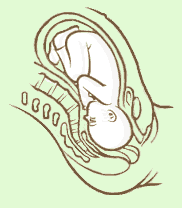
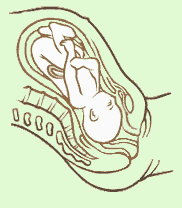
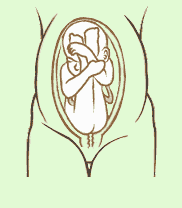
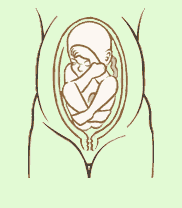
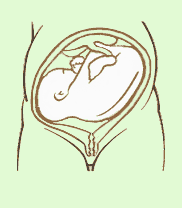
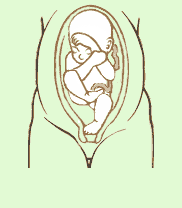
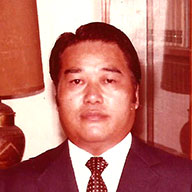 Junji Takano is a Japanese health researcher involved in investigating the cause of many dreadful diseases. In 1968, he invented PYRO-ENERGEN, the first and only electrostatic therapy machine that effectively eradicates viral diseases, cancer, and diseases of unknown cause.
Junji Takano is a Japanese health researcher involved in investigating the cause of many dreadful diseases. In 1968, he invented PYRO-ENERGEN, the first and only electrostatic therapy machine that effectively eradicates viral diseases, cancer, and diseases of unknown cause.


